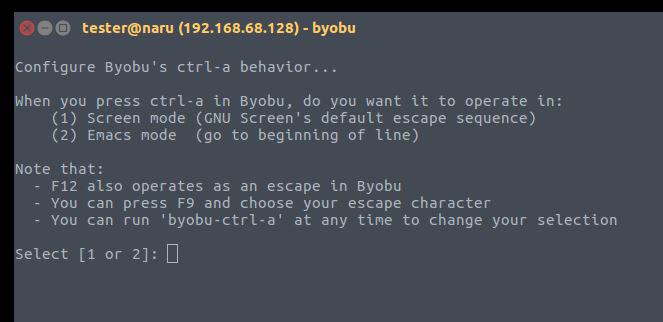You should early on get used to using commands instead of F1 - F12. A byobu command begins with Ctrl+a followed by a character.
If you press ctrl+a for the first time you will be asked wether you want to work in the screen or emacs mode.

This setting defines what escape sequence you want to use. I use screen, so Ctrl+a. If you use the Emacs setting it will be Ctrl+b to send a command and Strg+a jumps to the beginning of a line (as it usually would).
Once you made that choice you can start using Ctrl+a (or Ctrl+b) to send commands. To do this press Ctrl+a, then release all key and then press the command key.
A new window for example gets created using Ctrl+a —> c
You might be thinking that this is way more complicated then just pressing F2 and you might be right about that. However, once you want to send a command multiple nesting layers deep you will be reliant upon this method. So lern it the right way from the get go.
Also after a short learning period you do not want to go back to using the clonky F-Key method any more. Trust me.
Here are some of the commands that I use the most.
| Escape Sequence | Command | Function |
| Ctrl+a | ? | Lists all commands |
| Ctrl+a | c | Creates a new window |
| Ctrl+a | k | Closes (kill) a windows |
| Ctrl+a | <Number> | Jumps to the window <Number> |
| Ctrl+a | | | Horizontally splits the shell |
| Ctrl+a | % | Vertically spits the shell |
| Ctrl+a | , | Renames the window |
Cheers, Ori